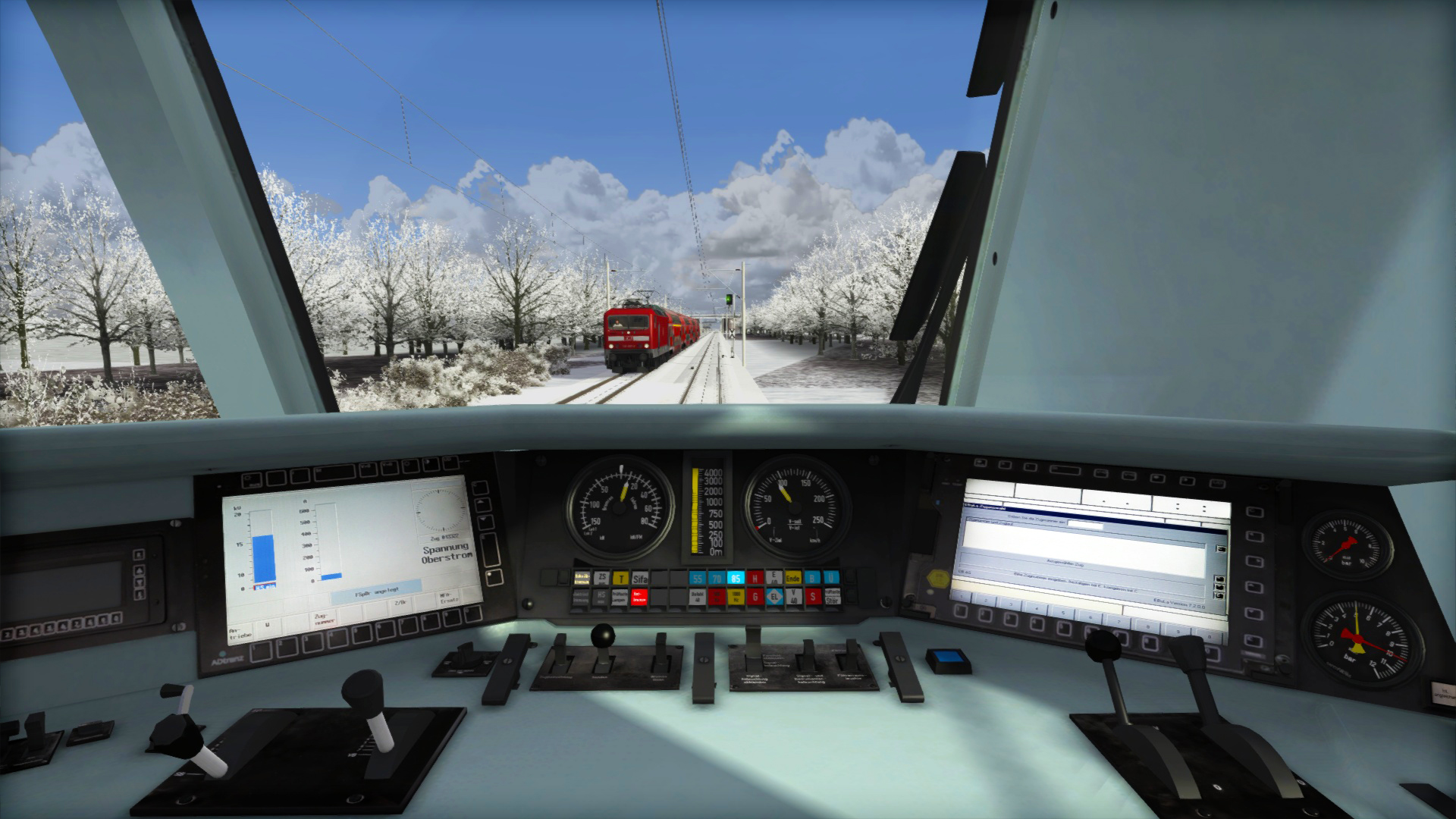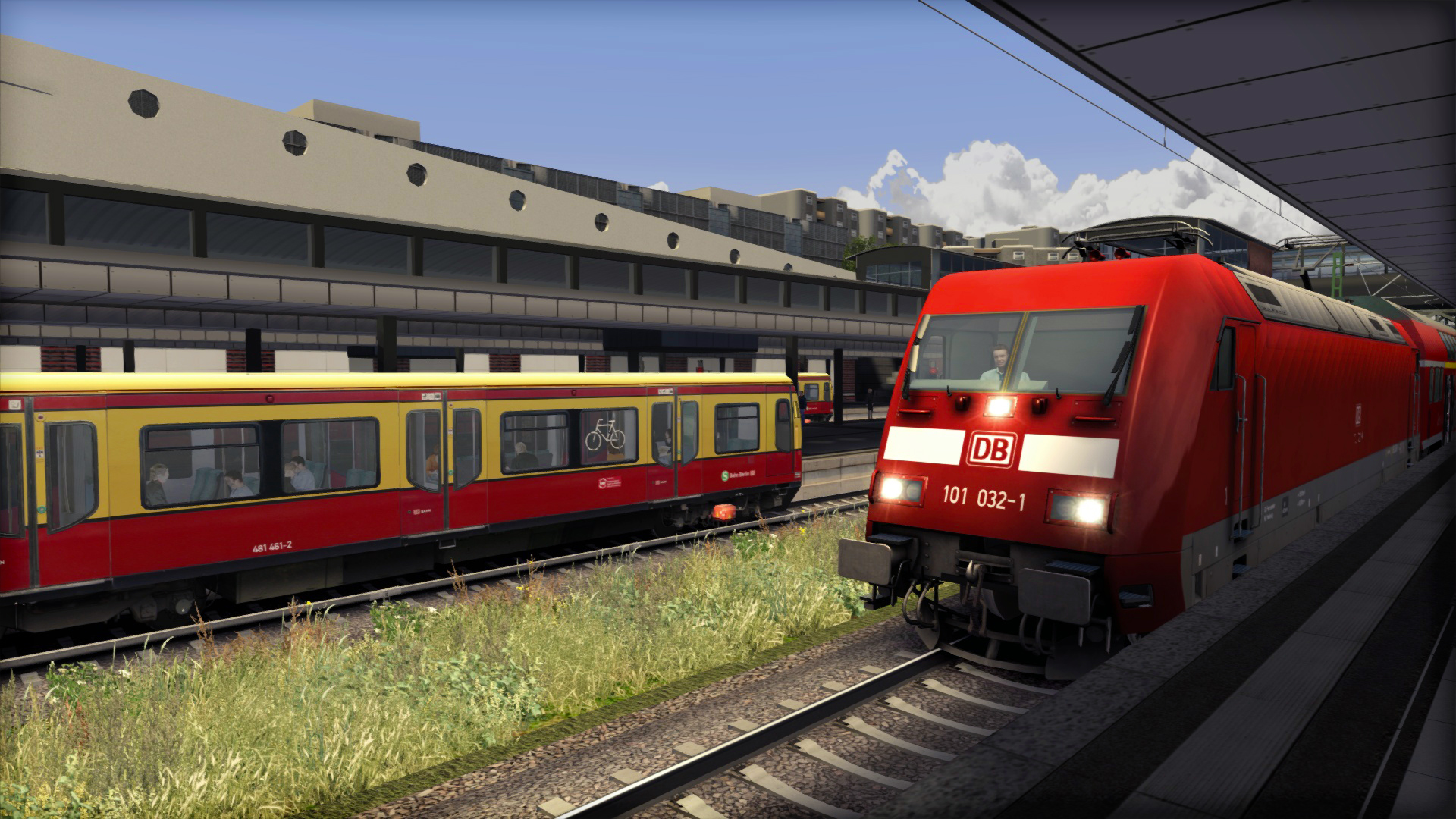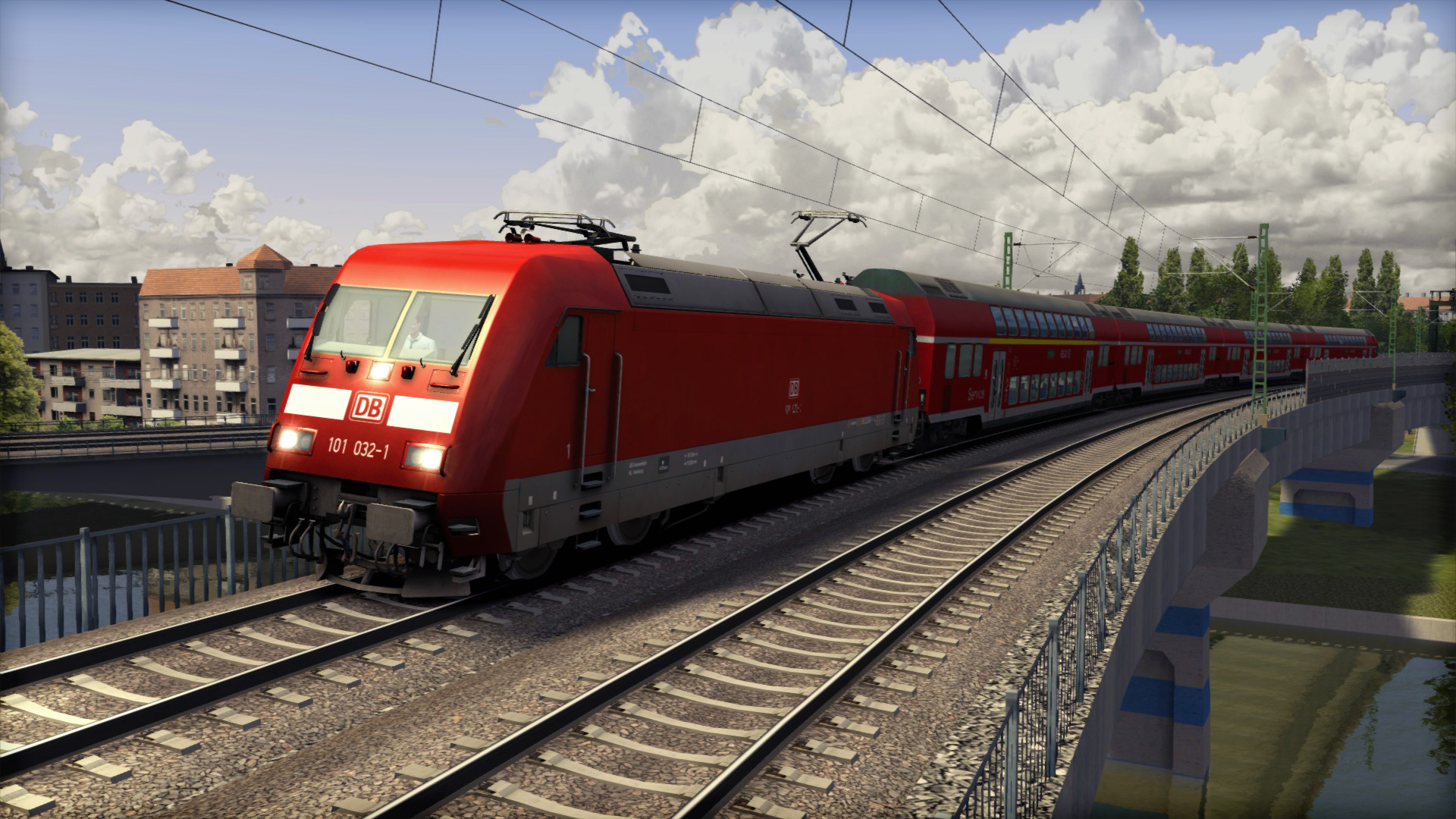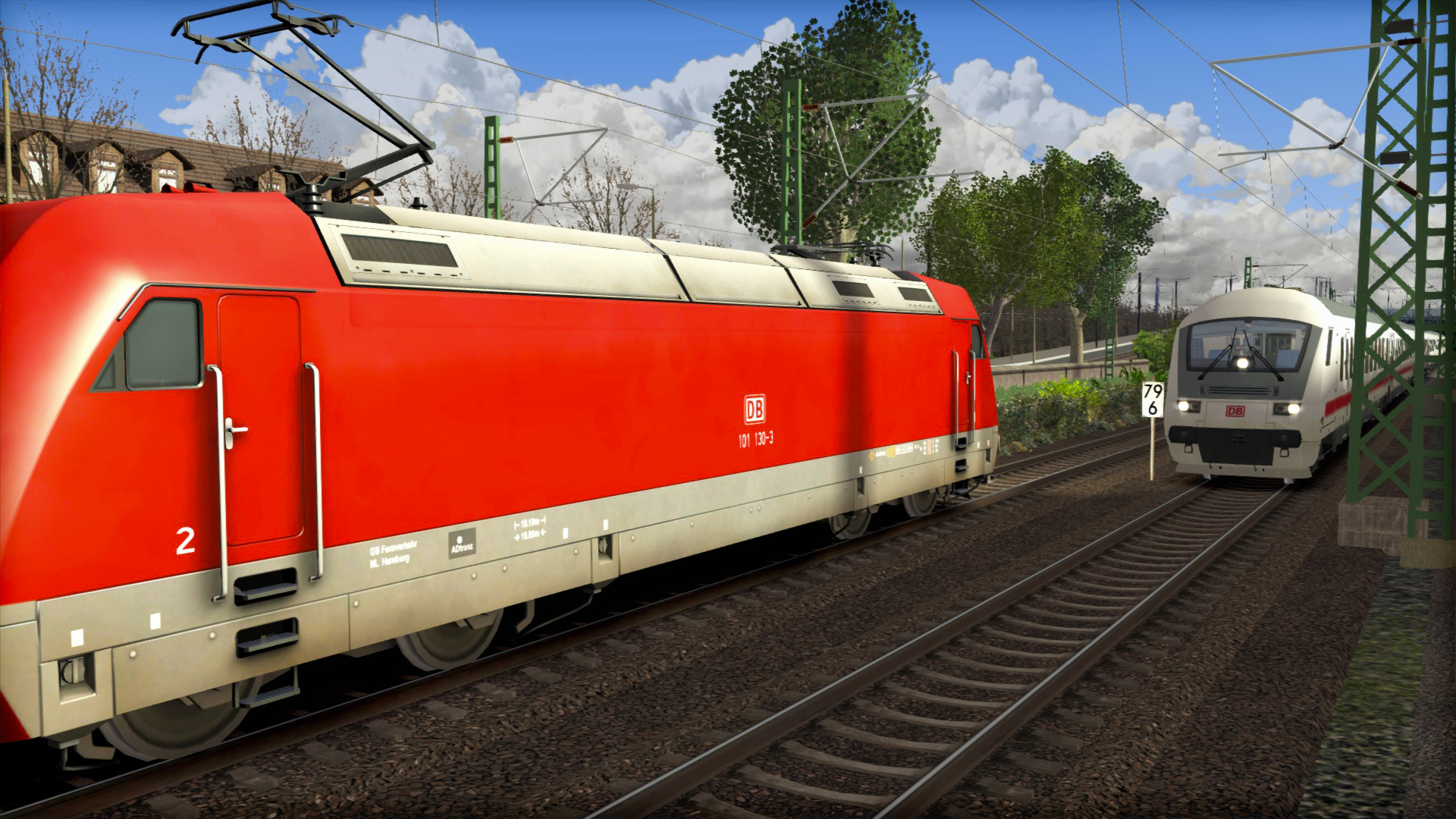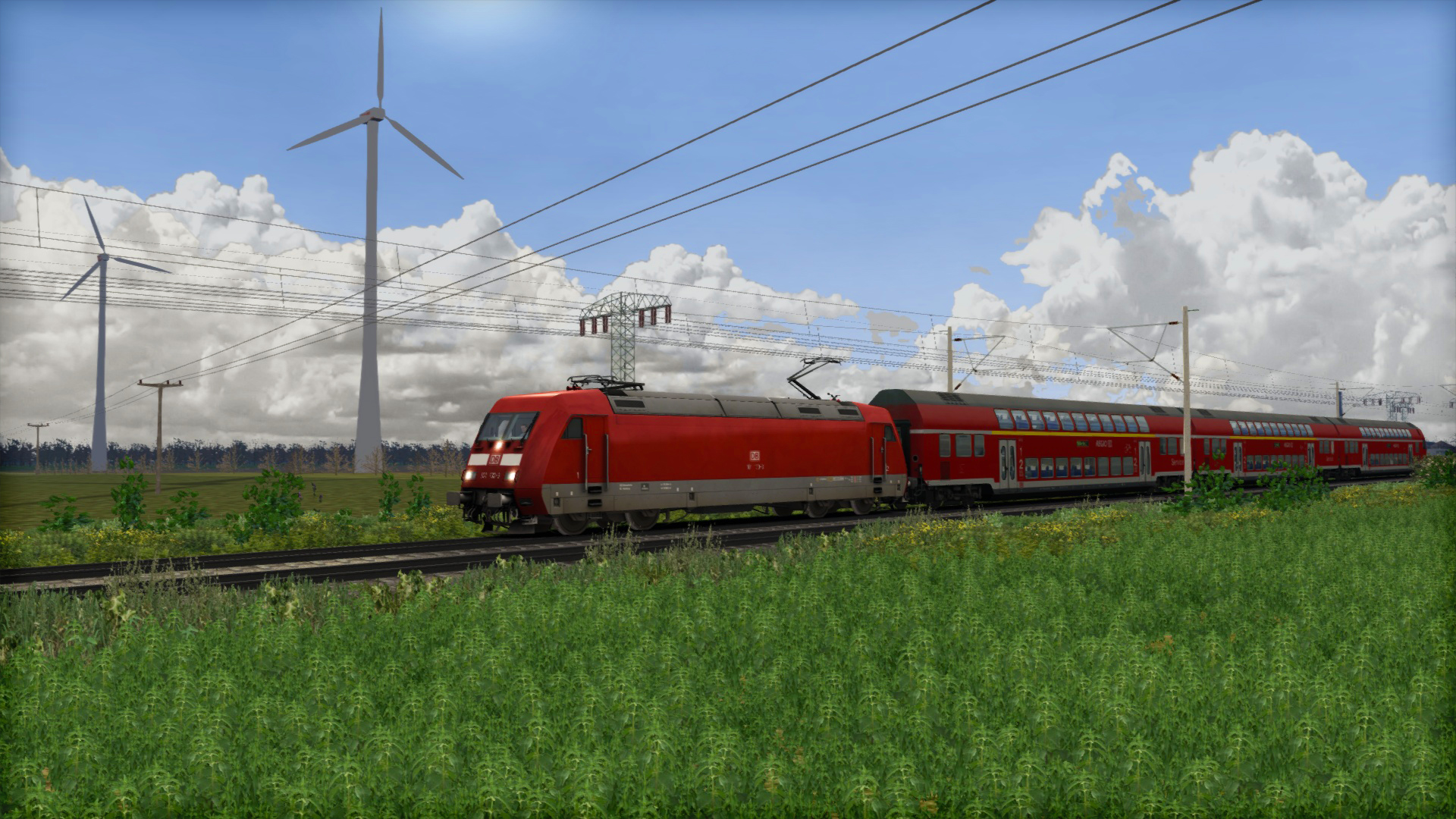Train Simulator: Berlin - Leipzig Route Add-On
Originating the 1840s, the railway that connects Berlin to the likes of Wittenberg, Bitterfeld and Leipzig has seen many upgrades throughout the decades to make it the high speed railway known today. Before the wires dominated over the rails, the line was considered as one of the most important of its kind throughout Germany. Be ready at the controls as Berlin-Leipzig is now available for Train Simulator, courtesy of Partner Programme member, Aerosoft.
The Berlin-Anhalt Railway Company was responsible for building many of Berlin’s railway connections throughout the mid-19th Century. Their main railway, the Anhalt Line, ran from Berlin to Köthen via Wittenberg and opened throughout 1840 and 1841. From Köthen, a connection was made to the nearby Magdeburg-Leipzig railway allowing for services to Halle and further to Leipzig. By the late 1850s, various connections were made faster with new, more direct routes.
The Anhalt Railway was quickly established as a major long-distance route, one of the most important in Germany. Express services were departing Berlin daily to destinations such as Halle, Leipzig, Dresden, and even beyond Prague. By the late 1930s, as many as 33 trains a day were on the move between Berlin and Bitterfeld before branching off to multiple destinations. This frequency of long-distance travel was the highest of every other railway in the country.
World War Two was harsh on the Anhalt Railway, many platform and lineside structures were destroyed along the route and only the most essential were repaired. The line also saw some changes in years to follow, the rise of the Berlin Wall meant services from Halle and Leipzig were no longer allowed to enter their former terminus. This would not be rectified until sections of the Berlin Outer Ring were completed, allowing direct connections to continue without approaching the wall. Several compromises had to be made and service numbers suffered.
The reunification of Germany saw the Anhalt Railway lose a portion of its importance, many services ceased following the fall of the Berlin Wall and a new stable timetable was not introduced for some time after. Several years later and even more services stopped operating across the line, with new high speed routes offering a faster connection.
A plan was put into place to upgrade the Anhalt Railway to 160 km/h running, with 200 km/h a distant provision. To achieve this higher speed and increase journey times, all level crossings were to be replaced with bridges and every station would be modernised. By 1995, the journey time between Berlin and Leipzig was only at 100 minutes, but with further modernisation was expected to be under an hour in years to come. Just over a decade later and a majority of the Berlin to Leipzig route was 200 km/h ready. Further upgrades to allow this included the restoration of the old Anhalt route in Berlin, connecting to the new main station for the city and just outside Bitterfeld, the longest set of points in the world were installed; safe for up to 220 km/h operation featuring 59 metre-long point blades weighing in at 120 tons each.
With higher speed allowances, ICE services began to operate between Berlin and Leipzig at journey times of around 1 hour and 10 minutes (non-stop services could travel the gap between the two cities in as little as 57 minutes). The upgrades were a success and ICE passenger numbers alone soared upwards, with regional services also adding to the increasing popularity of the line.
Some reconstruction has taken place in recent years, old metal 'Y-shaped' sleepers from the days of slower running were suffering from rust and needed to be replaced. Speed limits drastically dropped during the period of repairs, and following the initial issue the line speed is currently no higher than 160 km/h, with 200 planned to be re-introduced in 2017. Future projects along the line will see signal boxes replaced by larger signaling centres, with the old structures likely to see demolition after they have lived through their purpose.
Undoubtedly, the line owes its important heritage to the fact that it terminates in the world’s largest railway station by floor area, Leipzig Hbf. This goliath-like transport hub ensured that many passengers would want to travel to Leipzig either as a destination or as a waypoint along their journeys.
With high speed operations, both express and stopping, serving one of the most important lines in Germany’s railway history, the line between Berlin and Leipzig is unlike any other.
More scenarios are available on Steam Workshop online and in-game. Train Simulator’s Steam Workshop scenarios are free and easy to download, adding many more hours of gameplay. With scenarios being added daily, why don’t you check it out now!
The Berlin-Anhalt Railway Company was responsible for building many of Berlin’s railway connections throughout the mid-19th Century. Their main railway, the Anhalt Line, ran from Berlin to Köthen via Wittenberg and opened throughout 1840 and 1841. From Köthen, a connection was made to the nearby Magdeburg-Leipzig railway allowing for services to Halle and further to Leipzig. By the late 1850s, various connections were made faster with new, more direct routes.
The Anhalt Railway was quickly established as a major long-distance route, one of the most important in Germany. Express services were departing Berlin daily to destinations such as Halle, Leipzig, Dresden, and even beyond Prague. By the late 1930s, as many as 33 trains a day were on the move between Berlin and Bitterfeld before branching off to multiple destinations. This frequency of long-distance travel was the highest of every other railway in the country.
World War Two was harsh on the Anhalt Railway, many platform and lineside structures were destroyed along the route and only the most essential were repaired. The line also saw some changes in years to follow, the rise of the Berlin Wall meant services from Halle and Leipzig were no longer allowed to enter their former terminus. This would not be rectified until sections of the Berlin Outer Ring were completed, allowing direct connections to continue without approaching the wall. Several compromises had to be made and service numbers suffered.
The reunification of Germany saw the Anhalt Railway lose a portion of its importance, many services ceased following the fall of the Berlin Wall and a new stable timetable was not introduced for some time after. Several years later and even more services stopped operating across the line, with new high speed routes offering a faster connection.
A plan was put into place to upgrade the Anhalt Railway to 160 km/h running, with 200 km/h a distant provision. To achieve this higher speed and increase journey times, all level crossings were to be replaced with bridges and every station would be modernised. By 1995, the journey time between Berlin and Leipzig was only at 100 minutes, but with further modernisation was expected to be under an hour in years to come. Just over a decade later and a majority of the Berlin to Leipzig route was 200 km/h ready. Further upgrades to allow this included the restoration of the old Anhalt route in Berlin, connecting to the new main station for the city and just outside Bitterfeld, the longest set of points in the world were installed; safe for up to 220 km/h operation featuring 59 metre-long point blades weighing in at 120 tons each.
With higher speed allowances, ICE services began to operate between Berlin and Leipzig at journey times of around 1 hour and 10 minutes (non-stop services could travel the gap between the two cities in as little as 57 minutes). The upgrades were a success and ICE passenger numbers alone soared upwards, with regional services also adding to the increasing popularity of the line.
Some reconstruction has taken place in recent years, old metal 'Y-shaped' sleepers from the days of slower running were suffering from rust and needed to be replaced. Speed limits drastically dropped during the period of repairs, and following the initial issue the line speed is currently no higher than 160 km/h, with 200 planned to be re-introduced in 2017. Future projects along the line will see signal boxes replaced by larger signaling centres, with the old structures likely to see demolition after they have lived through their purpose.
Undoubtedly, the line owes its important heritage to the fact that it terminates in the world’s largest railway station by floor area, Leipzig Hbf. This goliath-like transport hub ensured that many passengers would want to travel to Leipzig either as a destination or as a waypoint along their journeys.
With high speed operations, both express and stopping, serving one of the most important lines in Germany’s railway history, the line between Berlin and Leipzig is unlike any other.
Scenarios
The Berlin - Leipzig Route Add-on includes nine challenging career scenarios for the route:- Autumn Leaves
- Night Flight
- S-Bahn to Bitterfeld
- S-Bahn to Leipzig
- From Elster to Elbe
- From Elbe to Elster
- Empty train to Leipzig
- RB to Schönefeld
- RB from Schoenefeld
More scenarios are available on Steam Workshop online and in-game. Train Simulator’s Steam Workshop scenarios are free and easy to download, adding many more hours of gameplay. With scenarios being added daily, why don’t you check it out now!
Key Features
- 195km twin-track, electrified main line from Berlin Central Station (low level) to Leipzig Main Station
- Includes the Berlin Brandenburg Airport branch line
- 18km S-Bahn line including rolling stock from TTB for AI use only
- 46 detailed stations / stops
- Depot at Wittenberg with extensive shunting possibilities, diesel depot, coal bunker and water crane
- Yard Grossbeeren with several connections for shunting scenarios and container loading
- Detailed Ks-signalling system
- Including PZB (500/1000/2000Hz magnets) by virtual Railroads
- LZB from Railtraction.eu
- Mileposts every 200m
- Superelevation
- Custom 3D vegetation
- Detailed and animated night effects
- Tram in Leipzig including rolling stock for AI traffic
- Rolling stock IC and double-decker coach RE160 with matrix display
- Nine challenging career scenarios for the route
- Quick Drive compatible
- Download size: 1.1 GB

